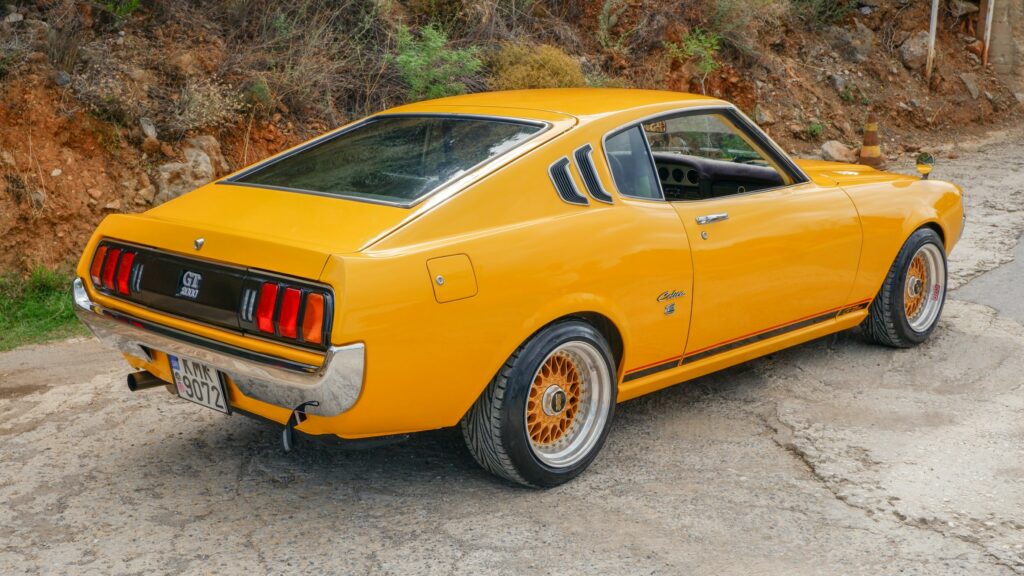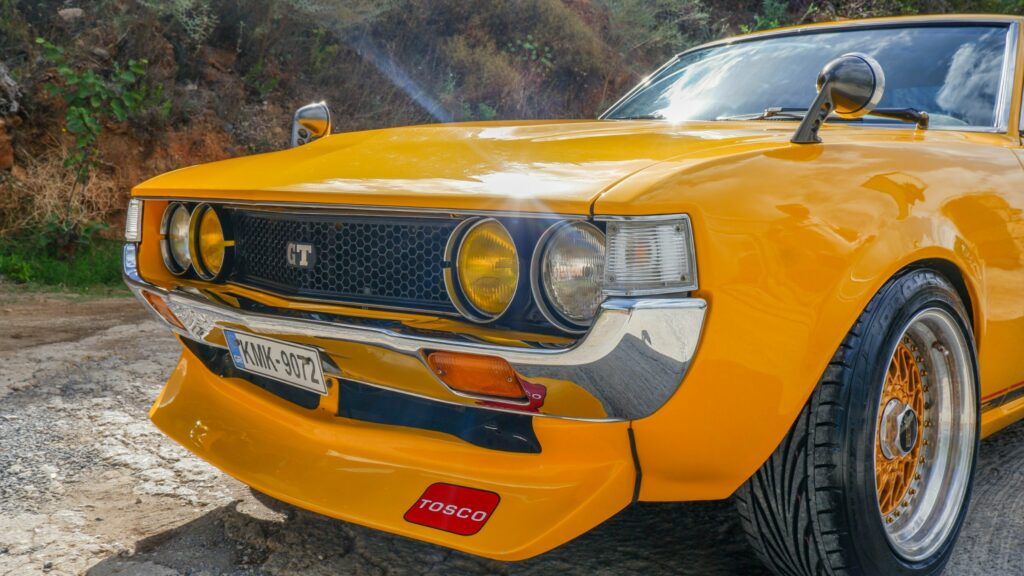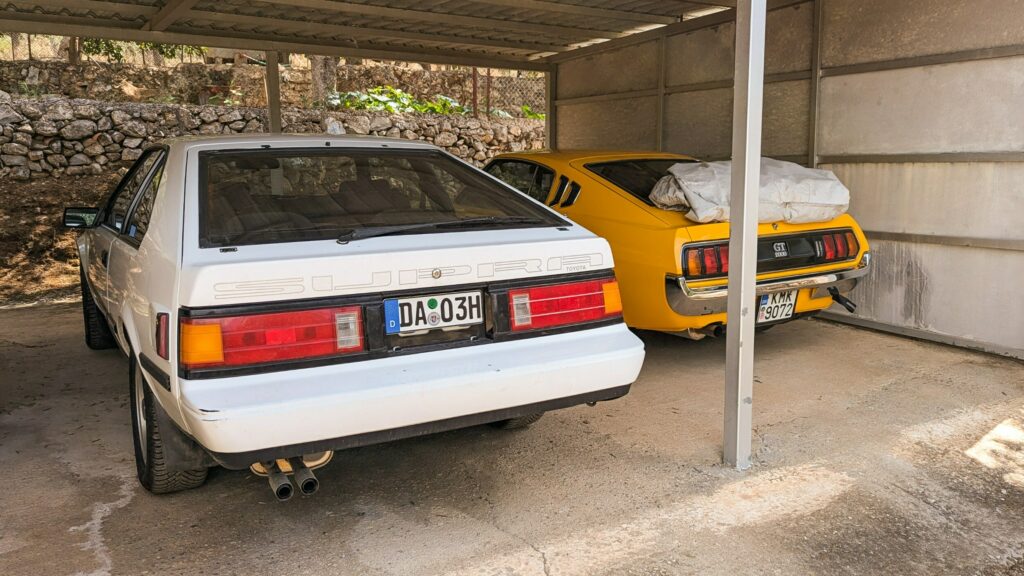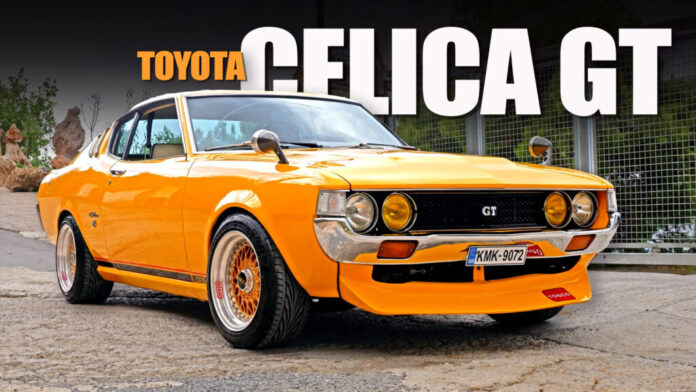It was one of those perfectly sun-drenched Saturday mornings when everything feels just a bit brighter, sharper. And there it was, glinting outside a coffee shop in my hometown of Kalamata, Greece—a pristine first-gen Toyota Celica Liftback, parked like it owned the place. Heads turned as people walked by, but I wasn’t just going to be another gawker. I had to know more.
var adpushup = window.adpushup = window.adpushup || {que:[]};
adpushup.que.push(function() {
if (adpushup.config.platform !== “DESKTOP”){
adpushup.triggerAd(“4d84e4c9-9937-4f84-82c0-c94544ee6f2a”);
}
else{
adpushup.triggerAd(“6a782b01-facb-45f3-a88f-ddf1b1f97657”);
} });
Luckily, the owner—a friendly local named Nikos Bakogiorgas—wasn’t just proud of his machine. He was generous enough to hand me the keys and unravel the tale of this beautifully restored classic while I took it for a spin. And oh, what a story it was.
Classic Drive: The Mercedes-Benz 280S Shows Us What It Means To Be Unique
With rumors of a new Toyota Celica in the works swirling these days, what better excuse to revisit the original? The first-generation Celica launched in 1971 as a two-door notchback coupe. By 1973, the Liftback joined the lineup, adding a bit of practicality with its fastback roofline and rear hatch. The car I was about to drive, a 1976 model, came from the final years of the first-gen run—a time when Toyota was nailing its formula for accessible, stylish performance.
var adpushup = window.adpushup = window.adpushup || {que:[]};
adpushup.que.push(function() {
if (adpushup.config.platform !== “DESKTOP”){
adpushup.triggerAd(“5646c171-cb6e-4e2c-8440-49013ca72758”);
}
else{
adpushup.triggerAd(“e7c4c913-3924-4b2d-9279-6c00984dd130”);
} });
Mustang Vibes, JDM Execution
It’s no secret that the Celica Liftback borrowed visual cues from the Ford Mustang, like the C-pillar louvers and the vertical bar taillights—signature pony car touches. Its sloping fastback roof and large rear hatch gave it a grand touring silhouette, making it a more practical, everyday sports car with enough room for an overnight bag or some groceries in the boot. Niko’s example—bright yellow and sitting on custom BBS wheels—looked every bit the vintage racer, but its story was one of resurrection.
The current owner had picked up the car in 2013, and by the following year, it was stripped to its bones and rebuilt. The donor car had lived a long life, from Iraq to Greece, before becoming his project. Now, with a new lease on life, it’s a refined example of vintage engineering.
var adpushup = window.adpushup = window.adpushup || {que:[]};
adpushup.que.push(function() {
if (adpushup.config.platform !== “DESKTOP”){
adpushup.triggerAd(“e96f0476-8b1d-4bb8-b64c-33f9656987b2”);
}
else{
adpushup.triggerAd(“0f9edca9-aa84-4c07-8987-4cad23928c2d”);
} });
Quick Facts
SWIPE

A Full-On Restomod
Niko stripped the Celica Liftback down to its bones, rebuilding it piece by piece and finishing it in a vivid, almost cheeky, yellow sourced from the Toyota Prius color palette. It’s the kind of color that demands attention, much like the rest of the build. Up front, the metal grille comes from a Celica GT, while the yellow-tinted headlights—borrowed from a BMW—add a hint of European flair. A race-inspired front splitter, fresh chrome bumpers, and fender-mounted mirrors round out the aggressive vibe.
Sitting on custom three-piece BBS wheels, now bumped up to 15 inches from the original 13, the Celica looks ready to pounce into action. The wheels are wrapped in staggered tires—195/50R15 up front, 205/45R15 at the rear—filling the arches perfectly, especially with the car slammed low to the ground. That drop (we’ll get into the suspension mods later) makes the whole thing look less like a humble 1970s cruiser and more like a vintage racer itching for a track day.
Retro Meets Resto
Inside, the transformation continues with the cabin walking the line between classic and custom. The bucket seats, imported from Malaysia, are wrapped in white vinyl to match the stock rear seats, which, frankly, are more about style than practicality—those rear seatbelts are purely for toddlers. Niko’s even gone so far as to fit a custom yellow carpet, matching the exterior, making the interior feel like an extension of the brash paintwork outside.
Photos Thanos Pappas / CarScoops
Despite its age, this was the high-spec ST (Sport Touring) trim, so it came with standard air conditioning and, naturally, a smattering of fake wood inserts on the door panels. The dashboard was sourced from a Celica GT, and Niko added a modern touch with a phone mount that connects to the car’s Bluetooth-compatible ECU, displaying real-time engine data. A Momo steering wheel, carbon-style inserts, and a TRD gear knob complete the sporty, yet retro vibe.
Upgraded Chassis
And that leads us to the mechanical modifications which are quite extensive, making this Celica more of a restomod than a faithfully-restored classic. The chassis has been dropped a full 3 inches, thanks to an overhauled suspension setup. Up front, you’ve got BC coilovers, while the rear is held up by Swift lowering springs paired with Kayaba adjustable dampers.
JDM Drive: Why This Little-Known Toyota Sedan Is A Four-Door Supra
But that’s not all. Many of the underpinnings have been borrowed from the classic Toyota Corolla AE86, the predecessor of today’s GR 86. The front suspension, rear axle, and ventilated disc brakes have all been lifted from the AE86 parts bin, as has the limited-slip differential.
A Lexus IS Powertrain
Niko took the Celica’s original 1.6-liter engine (all 105 horsepower of it) and swapped it out for a significantly more potent 2.0-liter four-cylinder from a Japanese market, 2000s Toyota Altezza RS200 (aka the Lexus IS in Western markets), complete with the six-speed manual gearbox driving the rear wheels. Out of the box, the Beams 3S-GE engine makes around 200 horses, but the owner wasn’t content with stock power. He tuned it up to 235 hp, adding a new ECU, Toda Racing camshafts, Individual Throttle Bodies (ITBs), and a custom 60 mm (2.4 inches) exhaust manifold for good measure.
A lot of tweaking was required to achieve the desired outcome, but the owner thinks it was definitely worth the effort.

Despite the extra heft from the engine swap, the modified Celica remains a lightweight, tipping the scales at just 1,100 kg (2,425 pounds). Sure, numbers aren’t everything in a classic like this, but they still tell a story. The 0-100 km/h (0-62 mph) sprint is dispatched in a respectable 6 seconds, with the quarter-mile coming in at a solid 13.8 seconds. Top speed? In theory, 248 km/h (154 mph), though Niko says he’s pushed it to 235 km/h (146 mph) on the open road. Not bad for a ’70s four-cylinder classic, right?
How Does It Drive?
You’d think a 50-year-old design with a slammed suspension would be a back-breaker, but the Celica surprised me with how comfortable it was on the road. Those BC coilovers and Swift springs keep it planted without completely rattling your teeth. On the highway, it’s a relaxed cruiser—true to its grand touring roots—though it’s always ready to remind you it’s been modernized when you press the throttle.
More: Built By Legends R34 Nissan Skyline GT-R Might Be The Ultimate Godzilla
Besides the modernized suspension that keeps the car planted, the next thing you notice is the glorious and loud sound of the high-revving, naturally-aspirated engine. Step on the throttle and you can easily reach speeds of 170-180 km/h (105-112 mph), with the addictive noise and the analogue feel prompting you to push further.
Interestingly, the owner told us that during his regular highway trips, fuel consumption is around 10 lt/100km (23.5 mpg) at 120-130 km/h (75-80 mph), which is not bad for a heavily modified 2.0-liter engine.
The only thing that shows the car’s age is the steering wheel that feels loose around the center at high speeds, due to the recirculating ball steering rack of the first-generation Celica. The owner plans on upgrading the setup with a more modern steering rack from the Corolla AE86, something that will certainly allow the driver to make the best out of the coilover suspension.
The brakes, though? As you’d expect from a classics car with a few decades under its belt, they require some serious legwork. The ventilated discs do their job, but this isn’t a car for light touches. And the clutch? Equally heavy and sensitive. But overall, it’s far friendlier than you’d expect for a car of this age.

The Celica Has Good Company In The Garage
Besides the 1976 Toyota Celica Liftback, Niko also owns a heavily modified 1983 Toyota Corolla AE86 racecar, which he claims to be the most powerful naturally-aspirated example of its kind in Europe. He also recently purchased a U.S.-spec 1985 Toyota Celica Supra, which he’s in the process of restoring. It’s clear Niko has a thing for RWD Toyotas, and he’s not shy about it.
Niko told us that his garage includes the finest examples of the Celica, Supra, and Corolla. His favorite kind of car is a “RWD, front-engined grand tourer with 2-3 doors”. It’s a formula that just works for him, and it explains his selection perfectly.
When it comes to modern cars, though, Niko’s less impressed. He likens them to tasteless food—fine for getting from A to B, but hardly a feast for the senses. Still, he occasionally hops into his wife’s daily driver (a Toyota Corolla hatchback) or rents something practical when needed.
Why We Build
For Niko, the magic of classic cars comes down to something deeper: the bond forged when you build or restore one yourself. It’s a connection no showroom-fresh car can offer, and this Celica is living proof of that philosophy. It’s been meticulously tuned and modified to his taste, a rolling expression of his passion. Sure, some purists might chase 100% originality, while others opt for a more personalized approach, but at the end of the day, we’re all united by the same thing—our shared addiction to grease and gears.
For me, the chance to drive this piece of Toyota history, dripping in mods and passion, was a reminder of what makes classic cars so special. They’re not just machines—they’re rolling stories, each with a past, a present, and in Niko’s case, a bright, fast, and loud future.

